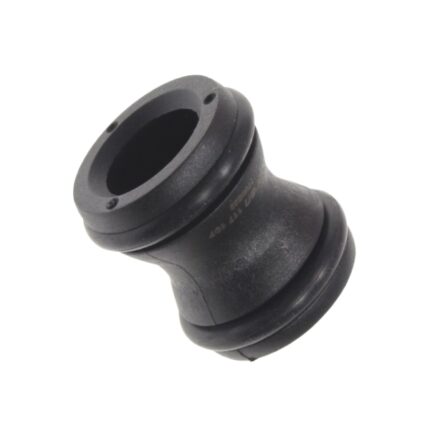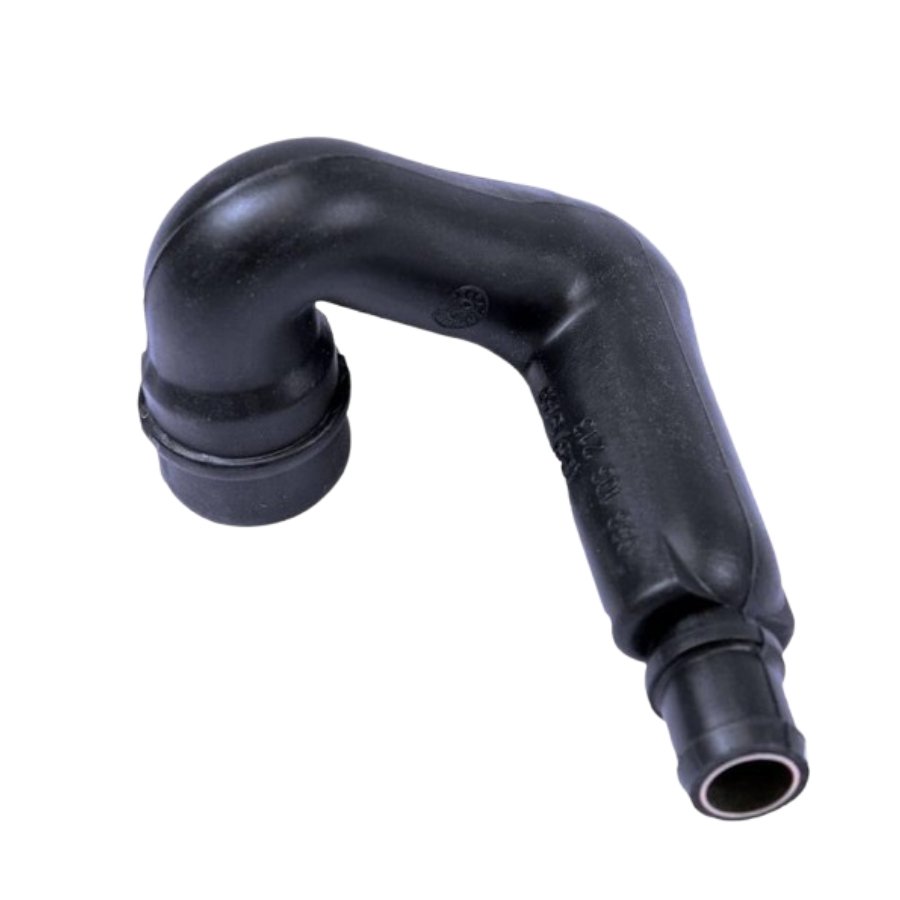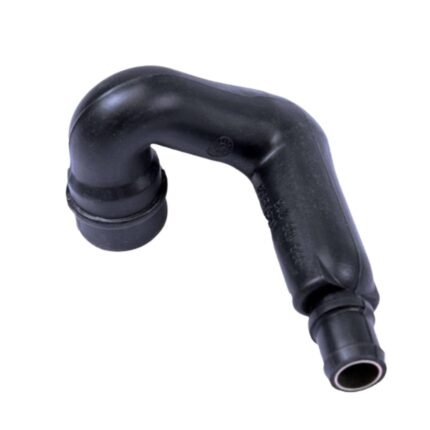Get VW Passat B5 (3B2) Crankcase Breather Hose 58103213 in Kenya
The crankcase breather hose is an integral part of an engine’s ventilation system, ensuring that harmful gases produced during combustion are properly managed. The crankcase, located at the bottom of the engine, houses the crankshaft and is where some of the combustion gases, known as blow-by gases, can escape past the piston rings. These gases need to be safely evacuated to prevent pressure buildup, contamination of the engine oil, and other potential issues. The crankcase breather hose plays a crucial role in this process by redirecting these gases back into the intake system, where they can be burned in the combustion process. This guide will explore the function, importance, types, common issues, and maintenance of the crankcase breather hose.
1. Understanding the Crankcase Breather Hose
a. Role and Function:
The primary function of the crankcase breather hose is to allow blow-by gases to escape from the crankcase and be reintroduced into the engine’s air intake system. These gases are composed of unburned fuel, water vapor, and other combustion byproducts that escape past the piston rings. If these gases were allowed to accumulate in the crankcase, they could cause increased pressure, which might lead to oil leaks, gasket failures, or other engine damage.
The breather hose connects the crankcase to the intake manifold or air intake system. As the engine runs, a slight vacuum is created in the intake system, which draws the blow-by gases through the breather hose, where they are then reintroduced into the combustion chambers to be burned.
b. Importance of the Crankcase Ventilation System:
The crankcase ventilation system, of which the breather hose is a key component, is essential for several reasons:
- Pressure Regulation: By allowing gases to escape from the crankcase, the breather hose helps maintain the correct pressure within the crankcase, preventing oil leaks and seal damage.
- Emission Control: The system reduces harmful emissions by redirecting blow-by gases back into the combustion process, rather than releasing them directly into the atmosphere.
- Oil Contamination Prevention: By removing these gases, the system helps prevent the contamination of engine oil, which can lead to sludge formation and reduced lubrication efficiency.
c. Components of the Crankcase Ventilation System:
- Crankcase Breather Hose: The hose that carries blow-by gases from the crankcase to the intake system.
- PCV (Positive Crankcase Ventilation) Valve: A one-way valve that controls the flow of gases from the crankcase to the intake manifold.
- Oil Separator: In some systems, an oil separator is used to remove oil particles from the blow-by gases before they are reintroduced into the intake system.
2. Types of Crankcase Breather Hoses
a. Rubber Hoses:
- Construction: Typically made from high-temperature-resistant rubber, these hoses are flexible and can withstand the harsh environment of the engine bay.
- Advantages: Rubber hoses are durable, easy to install, and relatively inexpensive.
- Disadvantages: Over time, rubber can deteriorate due to exposure to heat, oil, and other chemicals, leading to cracking or hardening.
b. Silicone Hoses:
- Construction: Silicone hoses are made from a silicone-based compound that offers superior heat resistance and flexibility compared to rubber.
- Advantages: These hoses are more resistant to high temperatures and chemicals, making them ideal for high-performance or extreme conditions.
- Disadvantages: Silicone hoses are generally more expensive than rubber hoses and may require special clamps for installation.
c. Braided Hoses:
- Construction: These hoses have an inner rubber or silicone core with an outer braided layer made from stainless steel or other materials.
- Advantages: Braided hoses offer enhanced durability and resistance to abrasion, making them suitable for high-performance applications.
- Disadvantages: They are more expensive and may be overkill for standard engine applications.
d. Plastic or Hardline Hoses:
- Construction: Some vehicles use rigid plastic hoses for crankcase ventilation, which can be molded to fit specific engine configurations.
- Advantages: Hardline hoses are durable, resistant to collapse, and can be precisely routed within the engine bay.
- Disadvantages: They are less flexible than rubber or silicone hoses, making them more difficult to install or replace.
3. Common Issues with Crankcase Breather Hoses
a. Hose Deterioration:
Over time, crankcase breather hoses can deteriorate due to exposure to heat, oil, and other engine byproducts. Common signs of deterioration include:
- Cracking: The hose may develop cracks, particularly at bends or where it connects to the engine components.
- Hardening: The hose may become hard and brittle, losing its flexibility and becoming more prone to cracking.
- Oil Saturation: The hose may become saturated with oil, leading to softening, swelling, or collapse.
b. Blockages:
Blockages in the breather hose can occur due to the buildup of sludge, oil deposits, or carbon. A blocked hose can prevent proper ventilation, leading to increased crankcase pressure, which can cause:
- Oil Leaks: Excessive pressure can force oil past seals and gaskets, leading to leaks.
- Poor Engine Performance: Blocked hoses can lead to increased oil consumption, rough idling, or reduced engine power.
c. Disconnected or Damaged Hoses:
A disconnected or damaged breather hose can allow unfiltered air to enter the engine, potentially causing engine damage or triggering check engine lights. Symptoms of a damaged or disconnected hose include:
- Whistling or Hissing Noises: A vacuum leak caused by a disconnected hose can produce unusual noises from the engine.
- Increased Emissions: Uncontrolled blow-by gases can lead to increased emissions and potential failure of emissions tests.
d. PCV Valve Malfunction:
The PCV valve works in conjunction with the breather hose to control the flow of gases. If the valve becomes stuck or fails, it can lead to similar symptoms as a blocked or damaged hose, including increased crankcase pressure and oil leaks.
4. Maintaining the Crankcase Breather Hose
a. Regular Inspections:
Regularly inspecting the breather hose for signs of wear, damage, or blockage is essential for maintaining the engine’s performance. Look for cracks, hardening, or oil saturation, and replace the hose if any issues are found.
b. Cleaning the Hose:
In some cases, the breather hose can be cleaned if it becomes clogged with sludge or oil deposits. Remove the hose from the engine, and use a suitable cleaning solution to flush out any blockages. Ensure the hose is thoroughly dry before reinstalling it.
c. Replacing the Hose:
If the hose shows signs of significant wear or damage, it should be replaced. Follow these steps to replace the crankcase breather hose:
- Step 1: Identify the hose’s connection points on the crankcase and the intake manifold or air intake system.
- Step 2: Carefully disconnect the old hose, taking care not to damage any surrounding components.
- Step 3: Install the new hose, ensuring it is properly secured at both ends with clamps or other fastening mechanisms.
- Step 4: Check for any vacuum leaks or improper connections after installation.
d. PCV Valve Maintenance:
Alongside maintaining the breather hose, it’s important to check the PCV valve regularly. A malfunctioning PCV valve can cause issues similar to a faulty breather hose. Replace the valve as part of regular engine maintenance, especially if symptoms like oil leaks or rough idling are present.
5. Impact of a Faulty Crankcase Breather Hose
a. Engine Performance:
A faulty crankcase breather hose can lead to a variety of engine performance issues. Without proper ventilation, the engine may experience rough idling, stalling, or misfires. Additionally, increased pressure in the crankcase can cause oil leaks, leading to reduced engine lubrication and potential engine damage.
b. Emissions and Environmental Impact:
A malfunctioning breather hose can result in increased emissions, as blow-by gases are not properly reintroduced into the combustion process. This can lead to higher levels of unburned hydrocarbons and other pollutants being released into the atmosphere, contributing to environmental pollution.
c. Engine Oil Contamination:
If the breather hose is blocked or not functioning correctly, blow-by gases can remain in the crankcase, leading to the contamination of engine oil. Contaminated oil can form sludge, reduce lubrication efficiency, and increase engine wear, potentially leading to costly repairs.
d. Fuel Efficiency:
A blocked or damaged breather hose can negatively affect the engine’s air-fuel mixture, leading to poor combustion and reduced fuel efficiency. Over time, this can increase fuel consumption and operational costs.
Follow us on Facebook for more parts.




